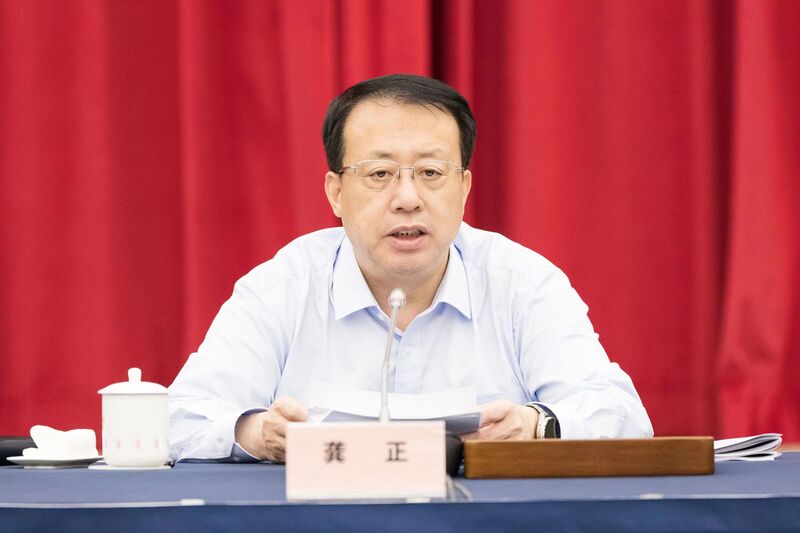Sister and sister stand up like this | Looking back at Shanghai for research, from 80% no work to supporting "half the sky" in Shanghai | women | half the sky
In 1953, a 22-year-old female worker stood out from the over 300000 spinning workers in Shanghai and was named the first generation model worker in New China, setting a record for the fastest factory to take care of 800 spindles per person.
She is Huang Baomei, the recipient of the July 1st Medal. Now over 90 years old, she still remembers that after giving birth, her mother and husband took care of all the household chores and children's affairs, especially supporting her to work. They said to her, "Times are different. You pursue progress, and we all support it.".
Huang Baomei, a textile worker from Shanghai Guomian Seventeen Factory, operates in front of the machine
Times have changed. Mao Zedong also said this sentence. At the very beginning of its establishment, the CPC regarded the pursuit of gender equality and the promotion of women's status as one of its goals. After the establishment of the People's Republic of China, Mao Zedong's speech on "The times have changed, and men and women are the same. What male comrades can do, female comrades can also do" has been deafening on the land of China, greatly promoting women's liberation and employment.

Shanghai was the first city in modern times to have professional women and the largest number of employed women. In the 1950s and 1960s, Shanghai conducted extensive explorations in promoting women's employment, using investigation and research as a practical approach to guide a large number of women to step out of their homes, become independent and self reliant, and ultimately move towards comprehensive liberation.
In 1951, women in Shanghai rushed to produce military socks sent to the front line of Korea
Why is it so difficult for women to find employment?
Before the liberation, the proportion of women employed in various industries in Shanghai was very low, and the employment was mainly dominated by lower level workers such as women in light textile factories. Most of these textile female workers are child laborers and underage workers recruited from rural areas, and they are often dismissed and returned to their hometowns or stay in cities to become housewives after reaching adulthood. In this social context, urban adult women are economically unable to be self-sufficient and have a lower social status.

After the liberation, in order to grasp the employment situation in the whole city, relevant departments in Shanghai conducted a survey. According to the Comprehensive Statistics of Shanghai in 1949, there were 1.615 million males aged 15 and above in the urban population of the city, of which 1.445 million were employed, accounting for 89.5%; The population of women aged 15 and above is 1.288 million, of which 259000 are employed, accounting for only 20.1%. 80% of adult women rely on men for their daily lives.
In terms of career fields, at that time, women's employment was mainly concentrated in industries such as industry, agriculture, commerce, handicrafts, domestic workers, and freelance work. Among the few employed women, only 7.78% work in government agencies. It can be seen that the breadth and depth of women's employment are very limited, and most of them are only low-level workers, lacking voice in the labor market.
To build Fahua Town Road, Shanghai's housewives participate in voluntary labor
Under equal conditions, women often find it more difficult to find jobs than men. At that time, the conditions for recruiting women into factories were very strict. Many factories only accepted "unmarried, childless, and physically healthy women", and the absence of married female employees was a clear rule in some units. Some even directly wrote in recruitment notices that "there are no female employees in this unit, and we will not recruit women.".
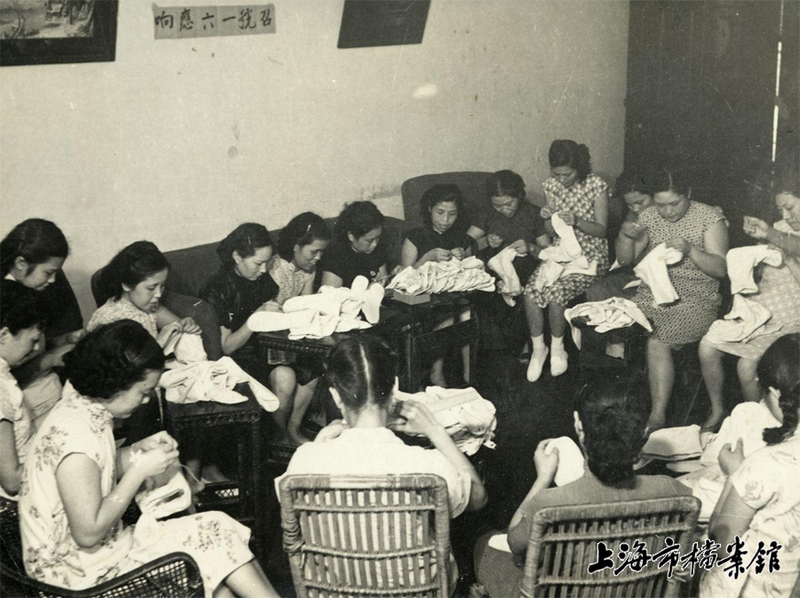
Moreover, even if women find jobs, discrimination remains ubiquitous. For example, although there are a large number of female workers in textile factories, their work conditions are still not ideal, and it is common for them to receive different pay for the same work. Female workers work tirelessly for more than ten hours a day, earning a salary generally lower than one-third of that of male workers, only enough for one person to barely make ends meet.
The phenomenon of discrimination and even exclusion of women, with varying degrees and forms, also exists in factories, mining enterprises, schools, and government agencies. For example, pregnant women are discriminated against, female apprentices are not willing to take care of, and the difficulty of children being left unattended at home cannot be solved. In order to survive, female workers have to bow their heads and endure this.
Materials on the Situation of Female Workers in Shanghai by the Women's Department of the Shanghai Federation of Trade Unions in 1953
"Three Steps" Promote Women to Step Out of the Family
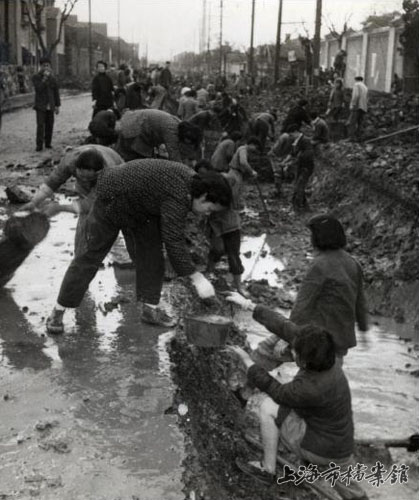
For a large city like Shanghai with a large population and a majority of housewives, how can women be allowed to step out of their homes and participate in politics, economy, culture, and social life? In the early 1950s, Shanghai promoted women's participation in productive labor in three steps.
Widely establishing women's organizations and developing women's cadres is the first step. In August 1950, the Democratic Women's Federation was established, and in the second half of 1951, the Democratic Women's Federation offices were established in various districts. In order to better promote grassroots women's work, Shanghai vigorously cultivates women's cadres in alleys. By 1954, women accounted for 65.5% of the total number of cadres above the level of committee members in the neighborhood, and training was also provided to women cadres at all levels to improve their professional skills. By 1952, more than 40000 women cadres had been trained, greatly improving their political awareness and work abilities.
In the 1950s, cadres of the Baoxingli neighborhood committee carried out work
Widely involving housewives in women's organizations is the second step. For ordinary housewives, their daily activities are mainly limited to taking care of children, doing laundry, cooking, and making children's clothes. Therefore, they do not go out much on weekdays except for buying groceries, and are not enthusiastic about the newly established Women's Federation organization. A survey from Penglai District pointed out that not only are there very few people who are truly enthusiastic about joining the Women's Federation, but the majority of them are young ladies and women from wealthy families, and there are too few truly poor women joining.

In view of this, Shanghai changed the previous participation methods of "individual members" and "group system" in 1951, and established lane women's representative meetings in addition to the resident committees of each lane. All housewives in the lane were the objects of their communication and communication. It was through the efforts of the Women's Representative Conference in Lilong that Shanghai housewives began to participate in public affairs in an organized manner. In 1954, Penglai District, through representatives from grassroots women's congresses, made more than 80000 housewives in the entire district aware of the resolutions passed at the second session of the city's second representative conference within three days. This surprised many people at that time.
On September 30, 1958, the Zhangjiazhai Lane Production Welfare Cooperative was established. The picture shows the sewing team rushing to make sleeves
Literacy and extracurricular learning have become the third step in promoting women to step out of the family. Since 1951, under the strong promotion of the Shanghai Democratic Women's Federation, women's literacy classes, newspaper reading groups, cultural evening classes, and other learning classes have been widely held in various alleys, with resident committees as units. By 1953, a total of 4632 literacy classes were held in the city, with 156000 students; Organized over 9000 newspaper reading groups with over 70000 participants.
The purpose of holding a study class is to enable women who stay indoors to understand the international and domestic situation, in order to better respond to the call of the Party and the country; The second is to provide a cultural foundation for their employment. The role of organizing study classes is very obvious. In 1958, out of the 115300 housewives admitted to Shanghai, 66600 had reached the level of primary school education, accounting for approximately 57.76%. And the vast majority of housewives completed their studies in literacy classes in alleys after 1951. The improvement of women's cultural quality has laid the foundation for them to leave their families.
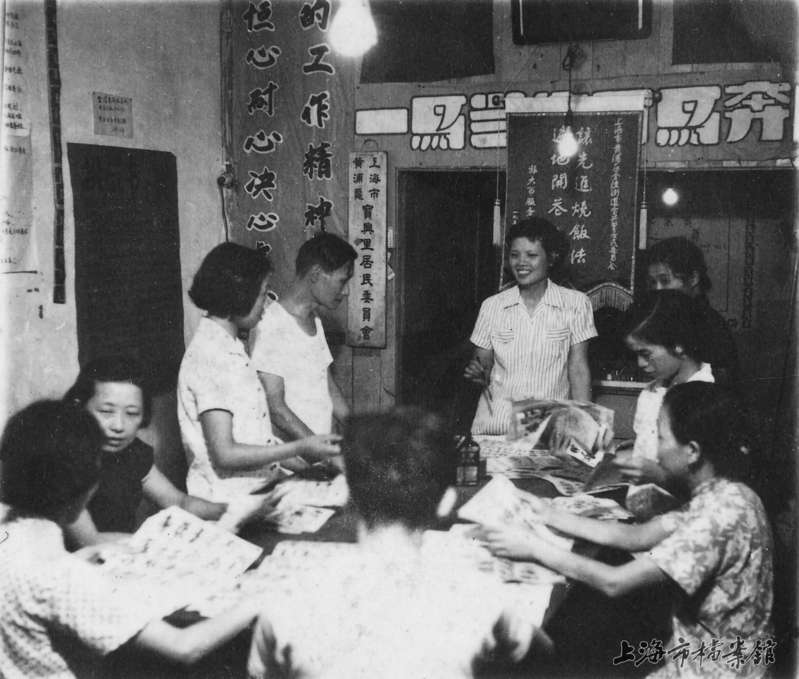
In 1954, students from the Second Women's Literacy Class on North Sichuan Road were attending classes
Improve the maternity security system
For women, the sense of liberation brought by leaving the home is beyond doubt. On the one hand, labor has enabled them to truly gain economic independence, and as a result, their status in the family has risen; On the other hand, labor also enables women to unleash their talents and plays a positive role in production.
At the same time, the lack of labor security at work, household chores after work, heavy parenting pressure, and increasing family disputes are common problems that women face after leaving the home.

Survey Report on the Implementation of Policies and Regulations on the Protection of Women and Children in Shanghai Factories and Enterprises by the Shanghai Federation of Trade Unions in 1956
For example, according to surveys, female workers in textile processing plants in Ningguo Street generally have prominent problems of "two long and one short". They have to wake up early and work late. At 4 o'clock in the morning, they spend two hours behind them busy eating, buying, washing, heating, cooking, and serving their children until they have finished breakfast before rushing to work. After finishing work at night, they also spend four hours busy with dinner, cleaning and patching. When it gets hot, they have to take a bath for their children and can only rest around 10 o'clock.
In the 1950s, the daily life scene of an ordinary working family
The breastfeeding problem of female workers in small and medium-sized factories is also prominent. According to a survey in Jiangning, Xuhui, Luwan, and Xincheng districts, 70% of female workers have yet to solve their infant breastfeeding problems. Some female workers put their children in the workshop during working hours, taking care of them while working. Li Linmei, a female worker at a dyeing and weaving factory in Penglai District, puts her child in the foot basin on the attic of the workshop during the day shift and in the large drawer of the workshop during the night shift. How can we focus on production like this? Female workers also suffer from noisy children, lack of sleep during the night shift, weakness in their hands and feet, and dizziness, which directly affects the completion of production plans.

The Shanghai Municipal Government attaches great importance to the issue of female workers giving birth and childcare, and has begun to conduct investigations and research on daycare facilities in various factories. According to the survey, 19 state-owned factories have daycare facilities, accommodating a total of 908 infants. Among the private factories, 15 have daycare facilities, accommodating a total of 509 infants. Generally, only infants aged one to eight months are admitted, with some factories accommodating 5-year-old children.
In the 1950s, volunteers taught children how to sing at a staff daycare
Due to financial difficulties at the time, it was not possible to develop a large number of daycare centers. Therefore, Shanghai requires that various regions should focus on consolidating and improving existing daycare facilities based on local and factory specific conditions, with relative development as a secondary priority. Based on this, various methods should be adopted according to the needs of female workers, such as organizing simple daycare facilities and nursing rooms, under possible conditions, to solve the difficulties of female workers. By the end of 1955, Shanghai had a total of 723 factories, daycare centers, and nursing rooms, which alleviated women's worries and ensured their employment.
Opening a daycare center can directly promote employment. Nurseries require a large number of caregivers. In the employment plan, the Shanghai Labor Bureau allows housewives with certain employment conditions to engage in general social welfare services, including the work of caregivers in daycare centers. This plan effectively solves the problem of a shortage of caregivers and difficulty in sustaining childcare, while also promoting employment for housewives.

At that time, the neighborhood daycare center
Implement equal pay for equal work
At the beginning of the founding of New China, the most frustrating thing for female workers was the unequal pay for equal work. If male and female workers have the same skills and work hours, but their wages are higher than those of female workers, male workers have food to eat but female workers have no food to eat, male workers go out for meetings on duty and receive wages, while female workers do not.
Statistical Table of Wages and Benefits for Female Workers in the Textile, Cigarette, and Rubber Industries by the Women's Department of the Shanghai Federation of Trade Unions in 1950
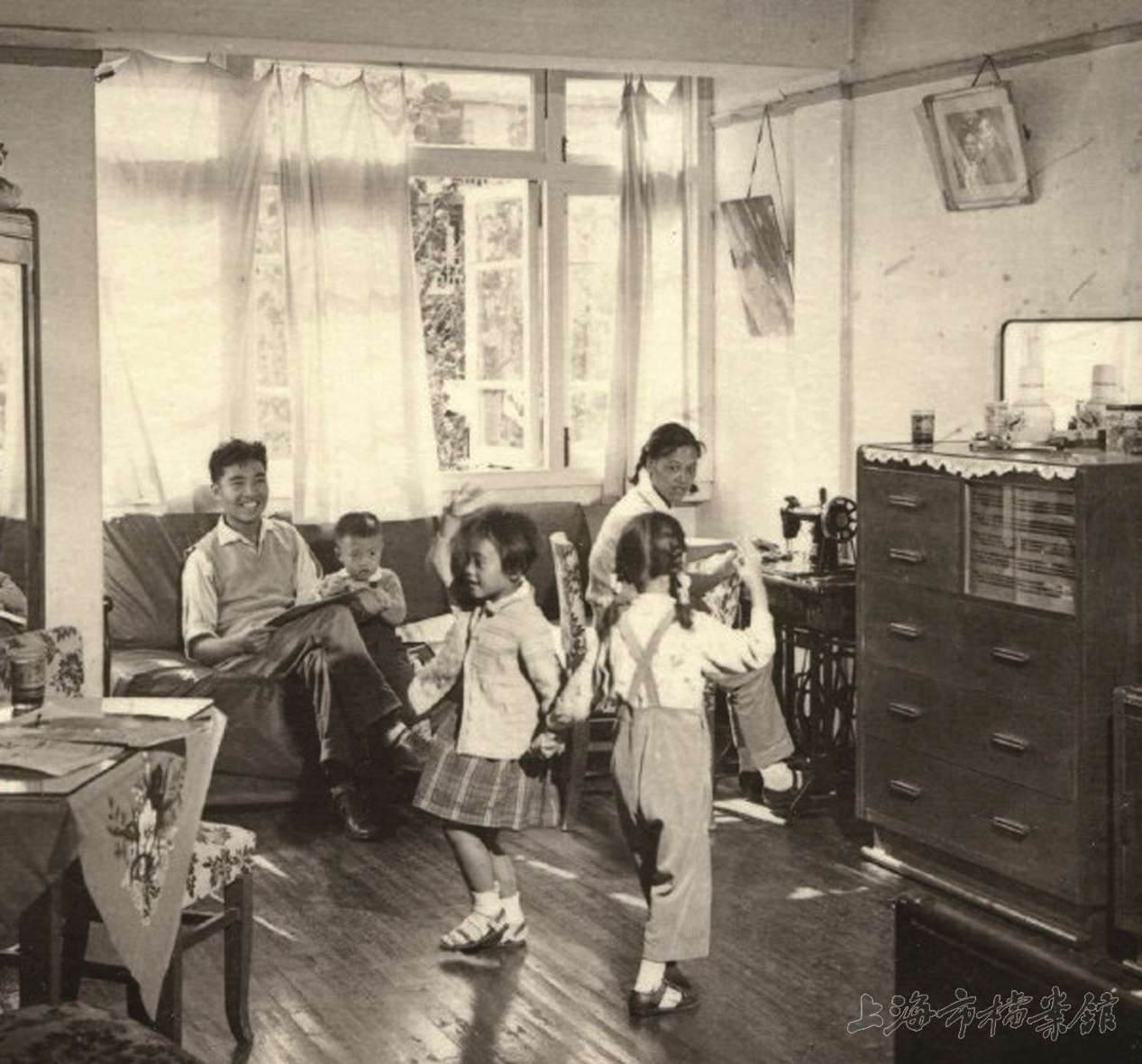
According to a survey conducted by the investigation team of the Shanghai Labor Bureau in August 1950, there were significant differences in wages and benefits between men and women in industries such as textile and silk weaving, knitted towels and sheets, cigarette industry, and rubber industry. In the textile and silk industry, it is common for female workers to earn lower wages than male workers. The average salary for male workers at Mifeng Woolen Factory is 2.21 yuan and for female workers is 1.56 yuan. In the two industries of knitted towels and sheets, the common phenomenon is the problem of accommodation for both men and women. Male workers are provided with accommodation by the factory, while female workers, except for a few factories, mostly take care of their own meals; There is also a difference in the payment date between male and female workers, with female workers being 3 days later than male workers.
In terms of sick leave wages and medical expenses, male workers in these industries are not deducted from their wages when taking sick leave, while female workers are deducted. So many female workers who get sick still persevere and do not seek medical treatment. Song Yuqin, a female worker at Meilai Factory, had a fever during pregnancy and insisted on giving birth as usual to avoid salary deductions, resulting in a fever of 40 ℃. Although she stopped working for three days, she still suffered from sequelae due to delayed treatment.
In February 1959, female employees of Shanghai Meilin Food Factory participated in the development of an automatic canning machine
The struggle of women against these unreasonable systems has been ongoing. After unremitting efforts, in 1954, "equal pay for equal work between men and women" was written into the national constitution, and Shanghai also began to implement the policy of equal pay for equal work, improving the existing problem of distribution inequality through wage reform. According to Ms. Ye Xiubao, a former female worker from a private dyeing and weaving factory, "After the salary reform, like many skilled car blocking workers, I was set at level eight and received 83.6 yuan. Our factory director only had over 100 yuan, while the dyeing and bleaching workshop and underwear workshop, although there were many male workers, did not have higher salaries than us."
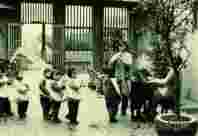
In 1956, a survey report by the Shanghai Federation of Trade Unions showed that according to a survey of three large factories and 35 small and medium-sized factories in four industries such as cotton weaving, printing and binding, zippers, and pharmaceuticals, the phenomenon of unequal pay for equal work was mainly reflected in the living welfare benefits of workers, and there was no evidence of unequal pay for equal work in the issue of wages. It can be seen that the issue of gender pay gap, which directly manifests in wages, has significantly improved at this time.
In 1952, young female workers from China Textile Machinery Factory operated machine tools in the workshop
Relief and transformation of special groups of women
In addition to establishing women's organizations, improving cultural level, improving maternity security, and implementing equal pay for equal work, Shanghai also pays attention to exploring role models for working women, encouraging more women to engage in labor production from a ideological perspective, and actively improving technology. Huang Baomei, Zhong Mingyue, Hang Peilan, and others were a group of exemplary figures that emerged at that time.
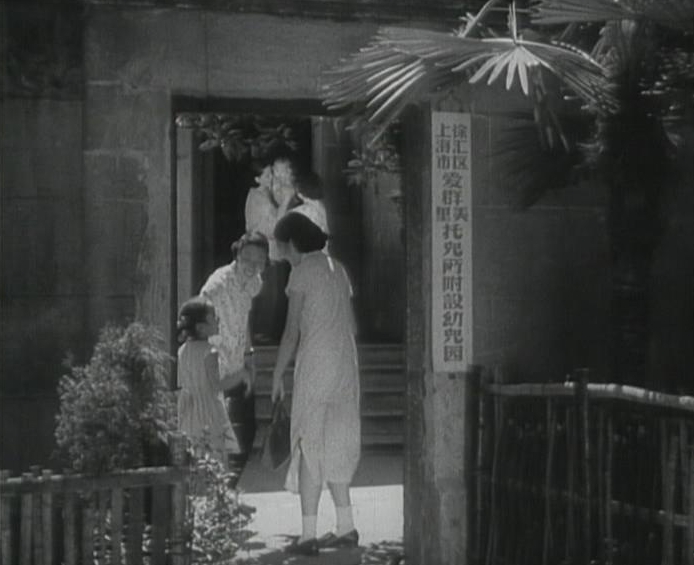
In addition, the relief and transformation of dancers and prostitutes was also a key task in promoting women's employment at that time. Before the establishment of the People's Republic of China, Shanghai had the highest number of prostitutes in the country. After the liberation of Shanghai, there was a lot of waste waiting to be revitalized, and the problem of unemployment was already very serious. If the dance hall and prostitution industries were directly banned, it is highly likely to make the employment situation even more severe. Therefore, after comprehensive consideration, the Party and the government have formulated and implemented a reform policy of first restricting development and then gradually phasing out.
In the past, Hui Le Li
The main management method adopted by Shanghai for prostitutes is a planned and step-by-step strict public security administrative management, gradually banning them first, and then banning them again when the time is ripe. After more than a year of rectification, by the end of 1950, the number of brothels in the city had decreased from 525 at the time of liberation to 156, and the number of prostitutes had decreased from 2227 to 559.
The same applies to dancers. The Shanghai Public Security Bureau has a clear attitude: "We believe that professional dancers are parasitic and dependent. In order to eliminate the old customs and prevent the corruption of young men and women in the new society, professional dancers should not be increased. However, for the old dancers, in order to take care of the difficulties of their immediate career transition, they are temporarily allowed to exist, gradually achieving the goal of elimination through restrictions."
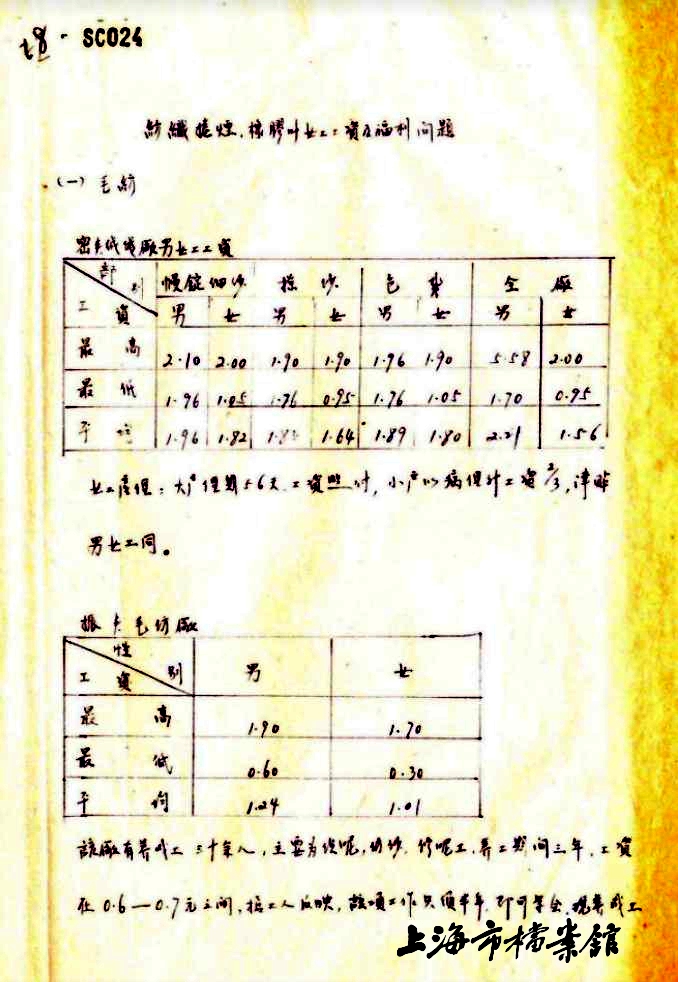
Since 1951, Shanghai has officially launched an action to eliminate the dance hall and prostitution industries. In November 1951, the Shanghai Municipal Party Committee issued the "Plan for Dealing with Prostitutes in the City", announcing the closure of all brothels and the centralized detention of prostitutes. The municipal government immediately began to reform prostitutes, allowing them to live a life that relies on labor, has dignity, and is self-sufficient. The Shanghai Women's Reeducation through Labor Center located at 418 Tongzhou Road is such a place. Over the course of several years, more than 7000 renovated students have been properly placed. Some of these students stayed in Shanghai, some returned to their hometowns, and some went to the northwest. They have all gained new social identities and opened a new chapter in their work and life.
Women who have regained their lives and embarked on a new journey
Since the founding of New China, countless women have embarked on the road of self-reliance and self-improvement under the leadership of the CPC. They have achieved economic independence while also gaining personal independence through their diligence and wisdom. The brilliant achievements of Shanghai over the past 70 years are also inseparable from the outstanding contributions of women, who have truly supported half of the sky.




